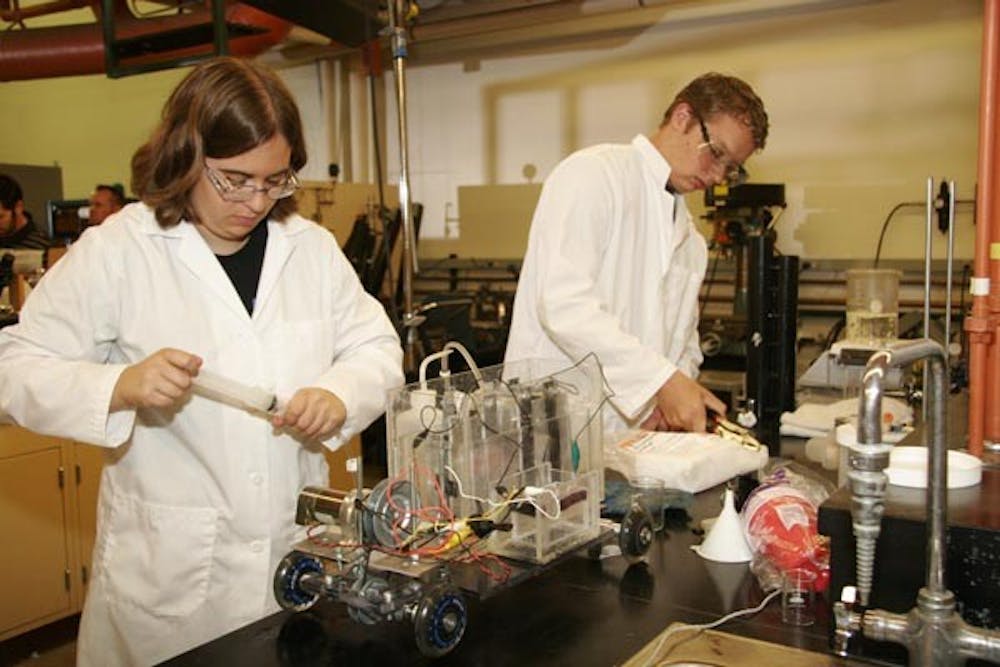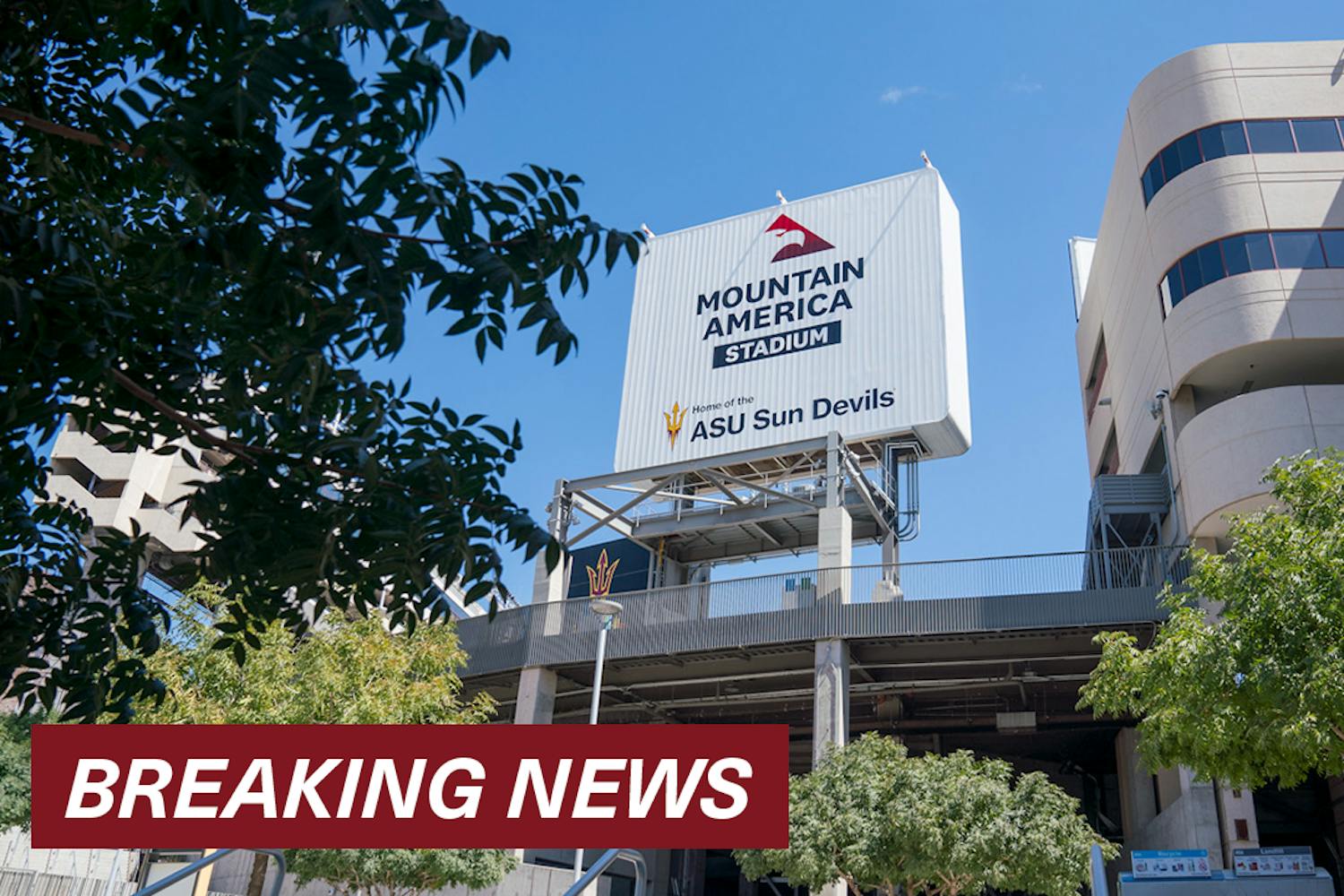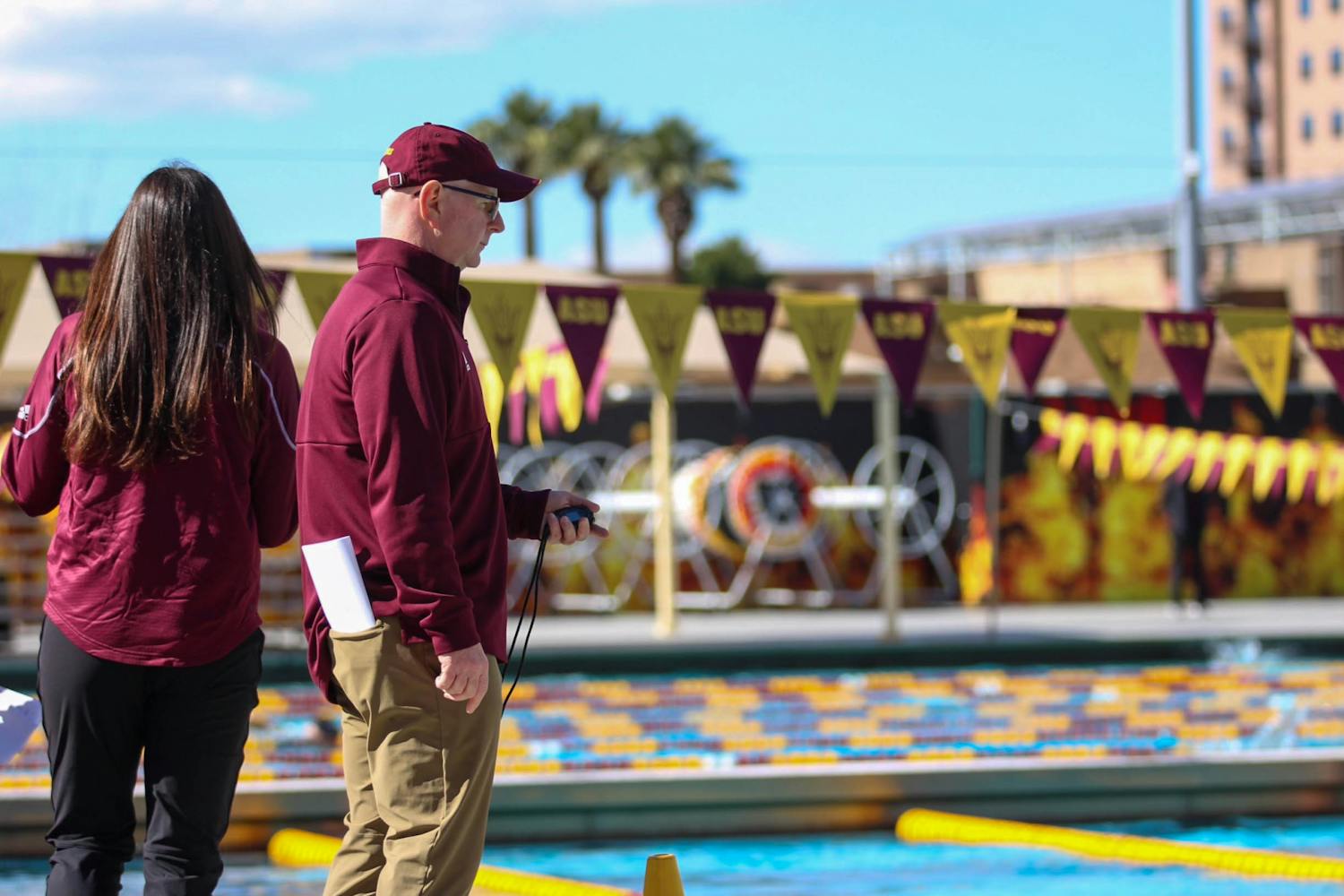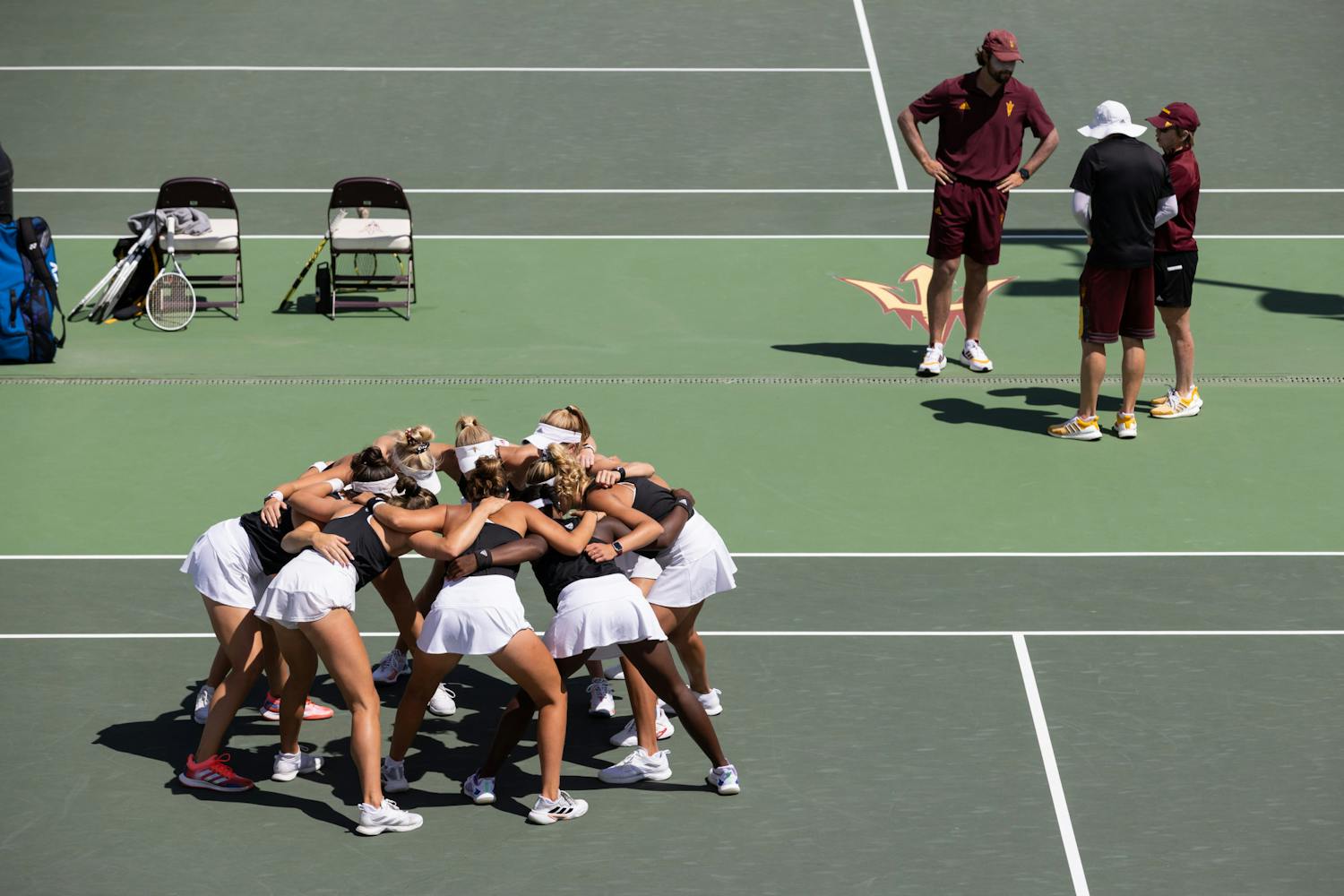ASU students are using chemical reactions to power their journey to a national science competition.
A team of ASU graduates and undergraduates will compete in the National Chem-E-Car Competition in Salt Lake City, a competition to build a small chemically powered car, on Saturday and Sunday.
Thirty other teams from universities across the nation will participate in the event. The American Institute of Chemical Engineers, a leading chemical engineering group, will organize the 12th annual competition.
In April, ASU’s team finished third at its regional competition, becoming the first team from ASU to qualify for nationals.
“We’re very excited,” said Alison Davis, a chemical engineering senior and team leader.
For the competition, each team of at least five people must design a chemically powered, shoebox-sized car that can carry up to 500 milliliters, about equal to 20 ounces. The vehicle must also be able to travel a distance between 50 and 100 feet within two minutes.
Additionally, the car must be able to stop using a chemical reaction as well, Davis said.
“We aren’t told how far it has to travel or how much water it has to carry until an hour before the competition,” Davis said.
The teams are graded on how close their car stops to the required distance, and also on creativity. First-, second- and third-place teams receive cash prizes of $2,000, $1,000, and $500, respectively.
“We would also win bragging rights,” Davis said.
The students have to account for each variable in order to travel the desired distance. Through extensive testing, the team developed a chart with the specific quantities of chemicals to travel each distance given a certain volume of water that needed to be carried.
Different teams employ different types of propulsion systems, Davis said. Common methods use pressure or chemical batteries to complete the task, but her team decided to take a different route.
The team’s car uses what is called a heat-gradient system, which employs extreme temperatures to generate electricity that powers the car.
The process works by placing two reaction vessels next to each other, one near 212 degrees Fahrenheit and another near 112 degrees below zero. The high temperature is achieved by combining water and sulfuric acid, while the low temperature is from the reaction of dry ice and ethanol.
Placed between the two reaction vessels is a Peltier junction, which creates an electrical current from the extreme heat and extreme cold that is used to power the vehicle, Davis said.
Changing the contents of each reaction vessel alters the amount of electrical current, and therefore affects the distance that the car travels.
In order to stop the car, the students placed a magnesium strip within the circuit and immersed it in hydrochloric acid, Davis said. Depending on how much acid is used, the magnesium strip will slowly dissolve, culminating by breaking the circuit and stopping the car.
The team faced many obstacles on its road to nationals, which began in August 2009. The team has met three times a week for four hours each time since then.
Luis Moya, in his first year of ASU’s graduate program in chemical engineering, worked primarily on the stopping mechanism.
This is his second year of the Chem-E-Car competition. In his first year, he worked on a battery-powered car.
“We have to build a stopping mechanism, and it can’t be a mechanical one,” Moya said.
The team had trouble placing the hydrochloric acid and magnesium strip in the car required to stop it, Moya said. Although diluted, the hydrochloric acid was still dangerous.
The team faced another challenge with the car’s base plate, Davis said. It was originally built from Plexiglas, but because of the vehicle’s weight, the base plate broke several times
A hard plastic base plate finally replaced it, but that required going back to the drawing board, since the makeup of the car was then completely different, Davis said.
“Consistency can be a problem,” Davis said.
She added that no test runs of the car are ever exactly alike, but the team has been able to keep the inconsistency to a minimum.
Each team is given two chances to travel the distance, allowing for some error, Davis said.
Bryan Vogt, associate professor in ASU’s School for Engineering of Matter, Transport and Energy, acted as mentor for the team. He took a very hands-off approach, he said, letting the students figure things out for themselves.
“The learning experience is better if they have to make the decisions,” he said.
The cash prize for finishing first could be used to pay for the team’s airfare to Salt Lake City, which the students had to pay themselves.
The funds they received from Undergraduate Student Government, the Ira A. Fulton Schools of Engineering and other private donors were only enough to cover materials, hotel costs and the entry fee, Vogt said.
The knowledge and experience gained through the Chem-E-Car competition can be applied in practically all fields of engineering, Vogt said.
Davis is pursuing a career involving semiconductors.
“I’m a very hands-on learner,” Davis said. “This competition gives a different perspective, a broader insight. You can’t get that anywhere else.”
Reach the reporter at alex.ferri@asu.edu
Want to get the latest ASU news in your inbox every day? Sign up for our new e-mail newsletter.





